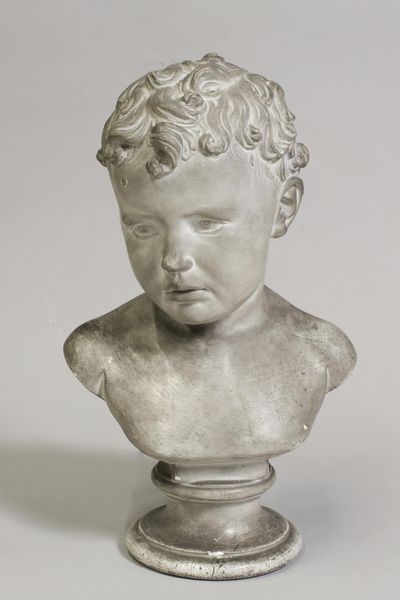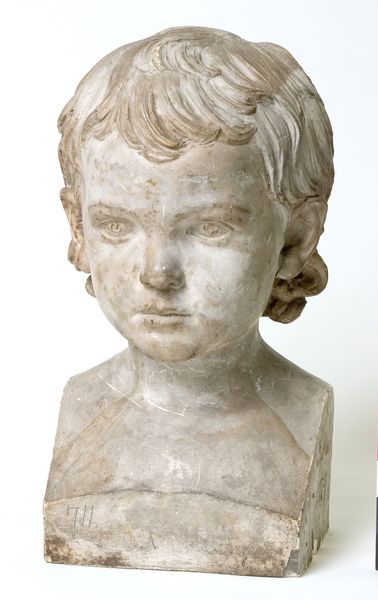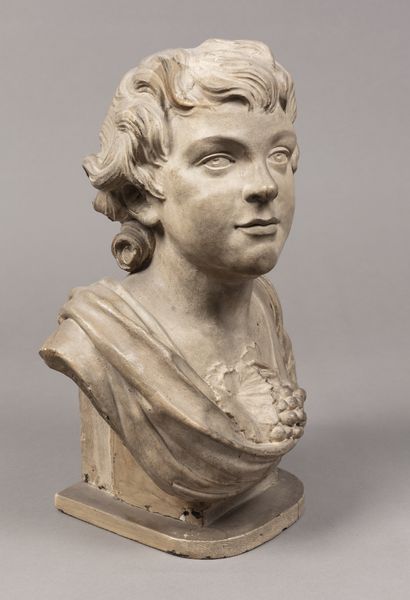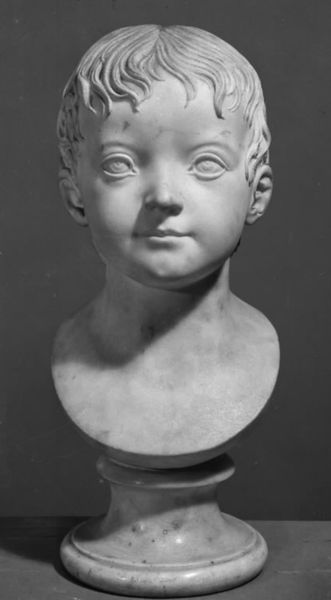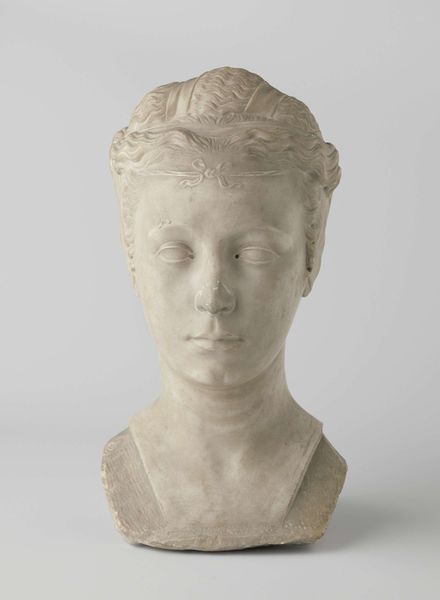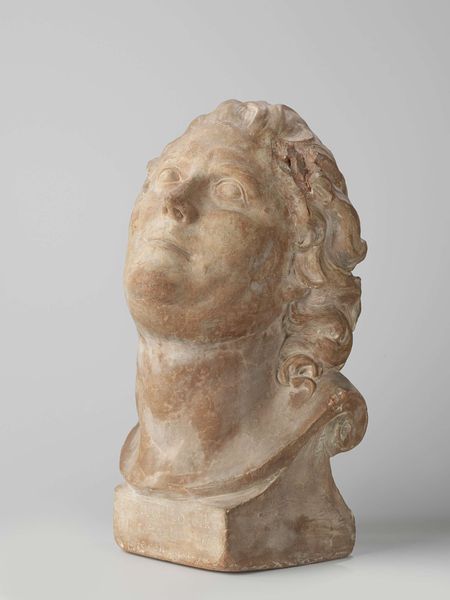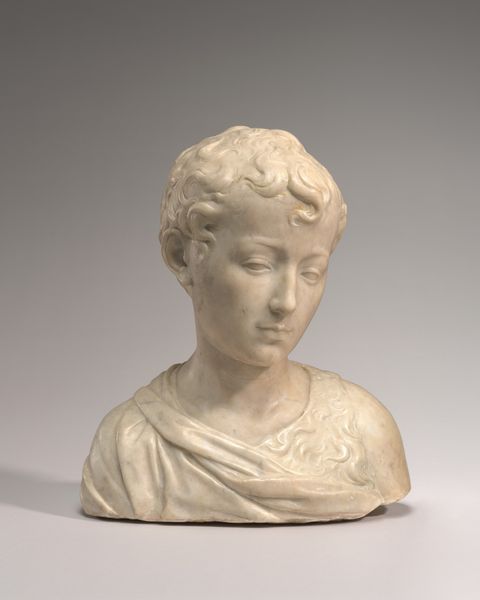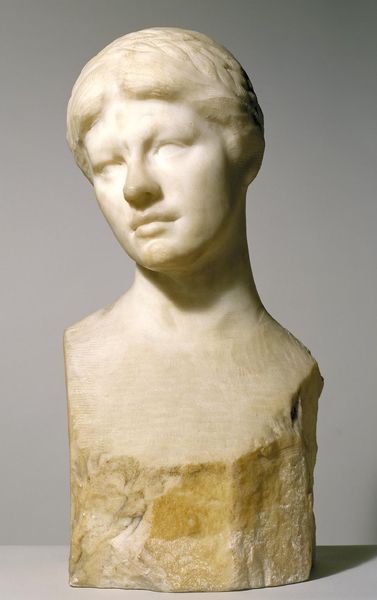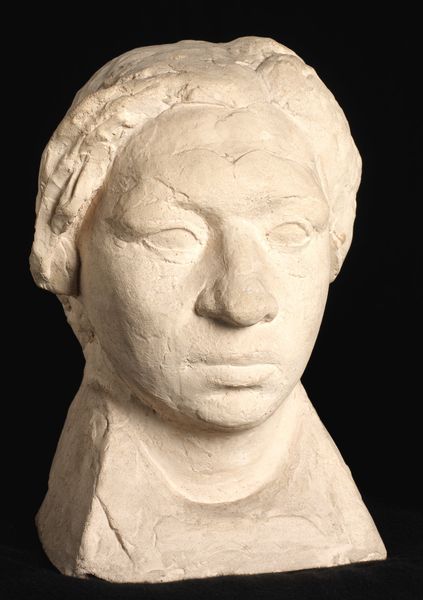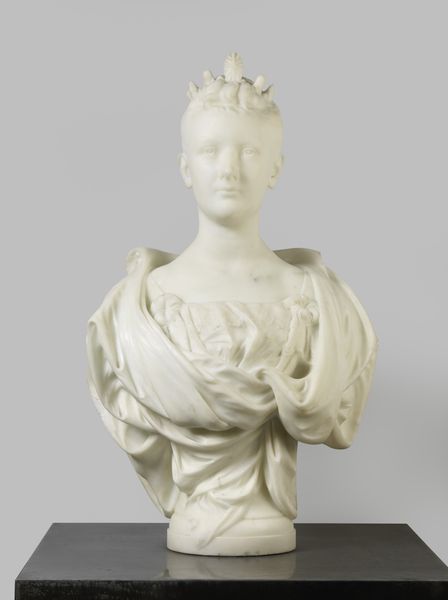
sculpture, marble
#
portrait
#
neoclacissism
#
sculpture
#
sculpture
#
marble
Dimensions: 38.3 cm (height) (Netto)
Editor: So, here we have H.W. Bissen's marble sculpture "Alfred August Puggaard," created in 1859. There's something really striking about the child's face, a mix of innocence and almost unsettling seriousness. What symbols or imagery jump out at you in this piece? Curator: It’s fascinating, isn't it? This bust embodies neoclassical ideals – restraint, order, and a deliberate reference to ancient sculpture, evident in the simplified forms and idealized features. Yet, within this framework, there is a carefully constructed symbolism at play. Notice how the subject’s youth is presented not as a fleeting stage but with an almost timeless gravitas. Doesn’t that elevation of childhood hint at emerging ideas about innocence and potential during the 19th century? Editor: That's a really interesting way to look at it. I initially saw the ruffled collar as simply decorative, but in contrast with the severe expression it stands out more now. Curator: Exactly! These elements, the somewhat severe haircut combined with the lace collar, operate as cultural signifiers. They speak of both status and a perceived moral purity, traits highly valued within bourgeois society. Ask yourself: what stories did the patron wish to weave with this sculpture? It's not just about likeness; it's about shaping an enduring narrative. Editor: So, by immortalizing Alfred in marble, Bissen and his patron are trying to preserve not just his image but also a specific set of values? Curator: Precisely. And the choice of marble itself underscores that desire for permanence. Think about how classical sculpture, which Bissen would have been deeply familiar with, informed his understanding of material and its capacity to carry meaning across centuries. What do you make of the sculpture's current setting in a museum, compared to its original domestic environment? Editor: Placing it in a museum gives it a different kind of weight, doesn't it? It’s like elevating a personal history to something of public interest. I see so much more now, thinking about the historical context and intended symbolism, than I did when I just considered the image of a child. Curator: Indeed. The museum context highlights how cultural memory is actively constructed and renegotiated across time, revealing enduring societal values and anxieties reflected in something as seemingly simple as a child’s bust.
Comments
No comments
Be the first to comment and join the conversation on the ultimate creative platform.
